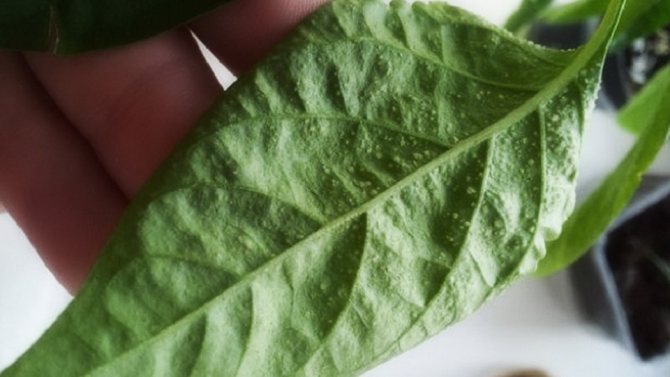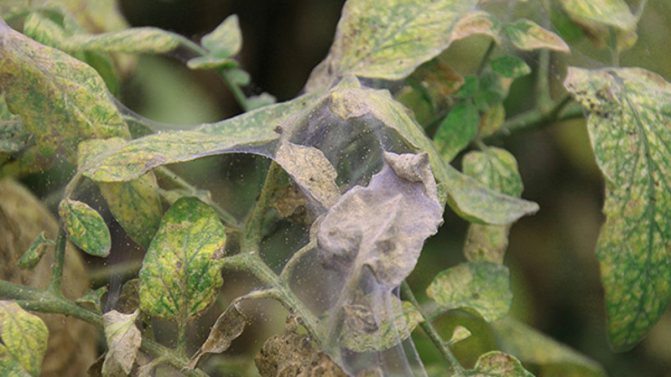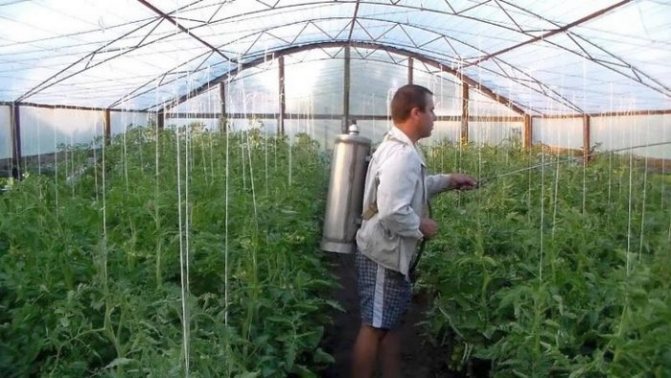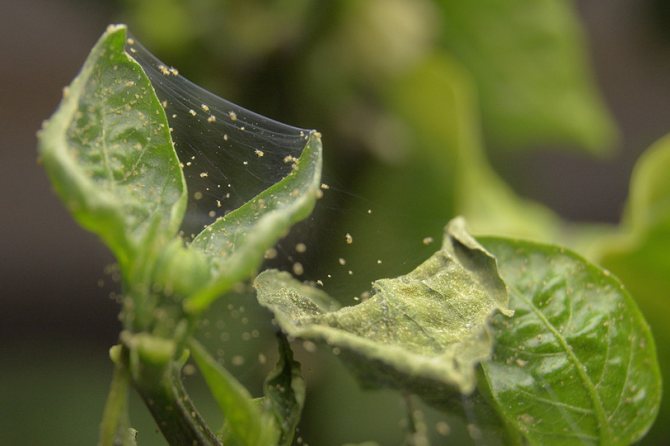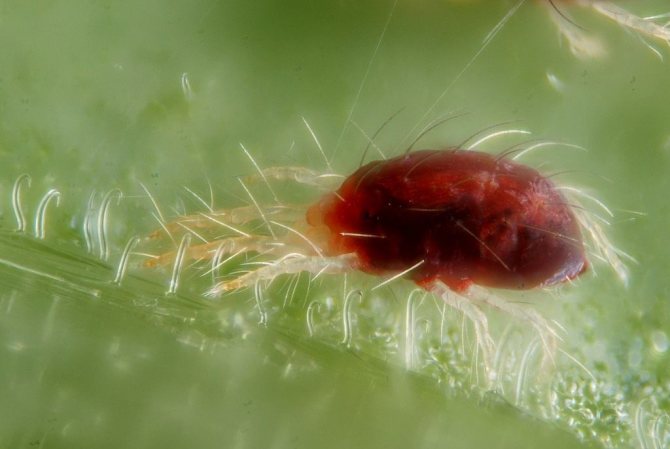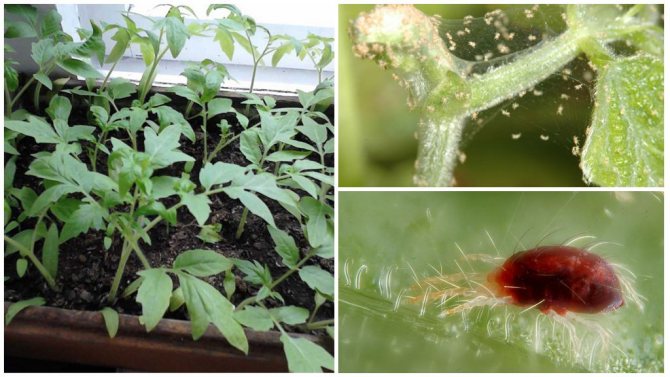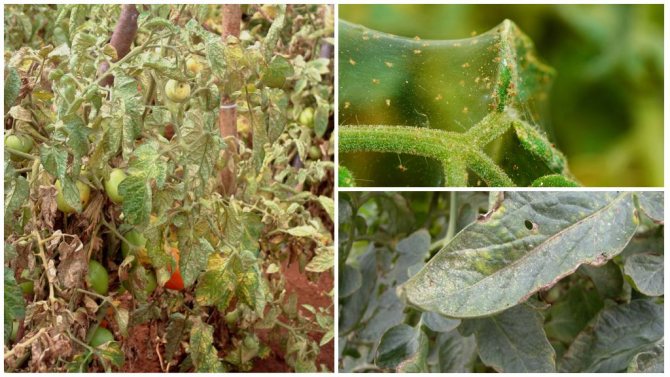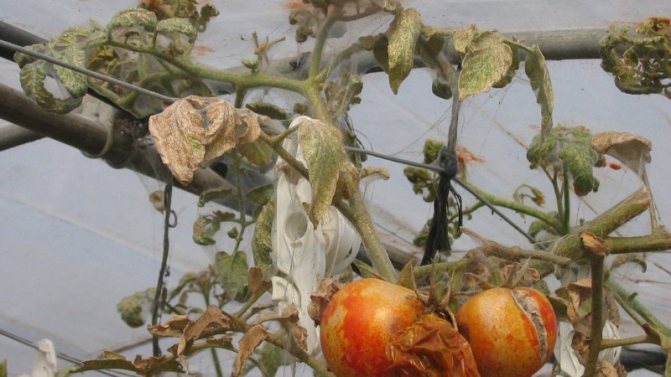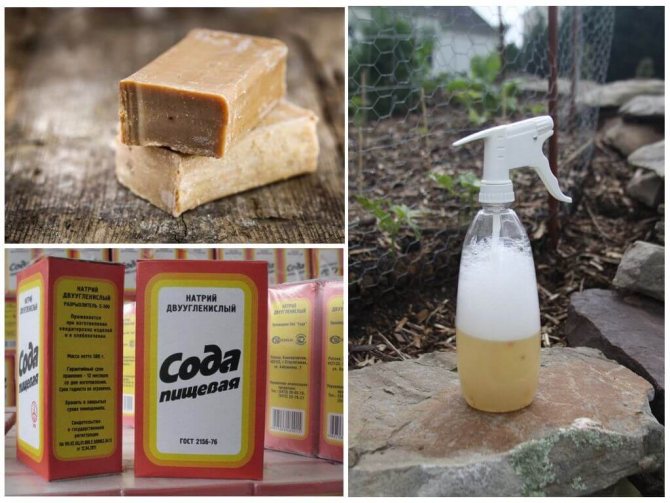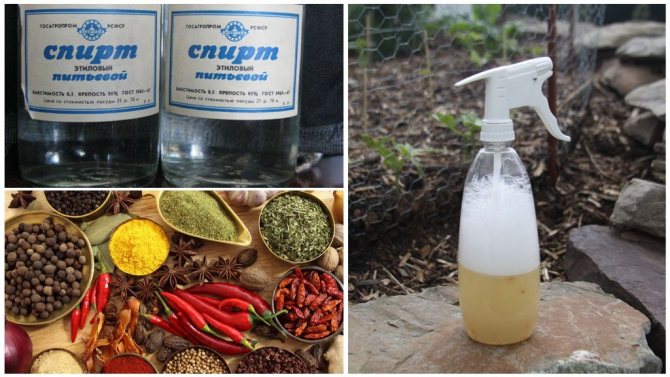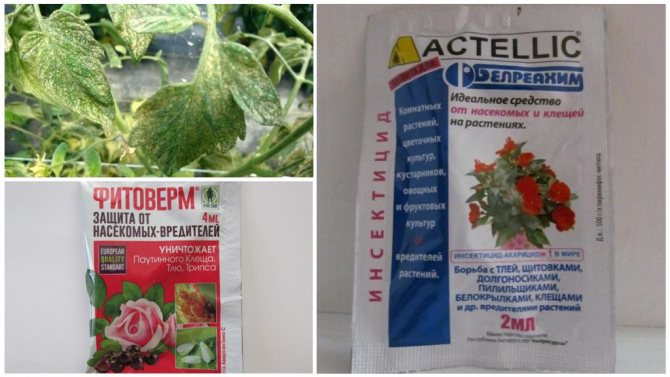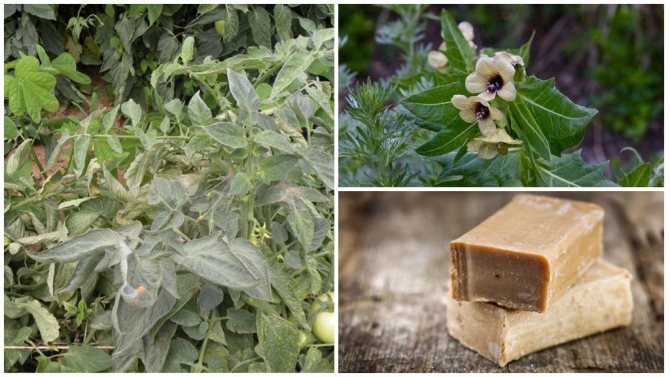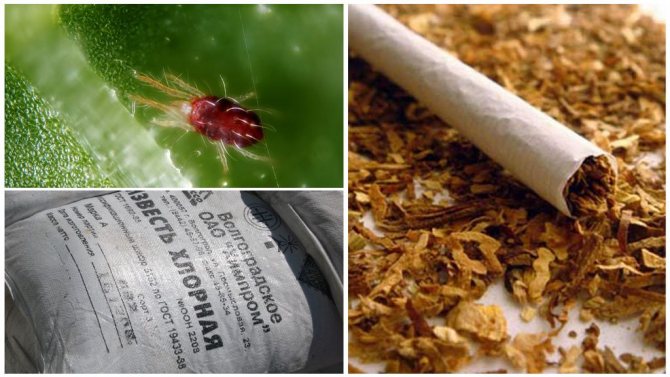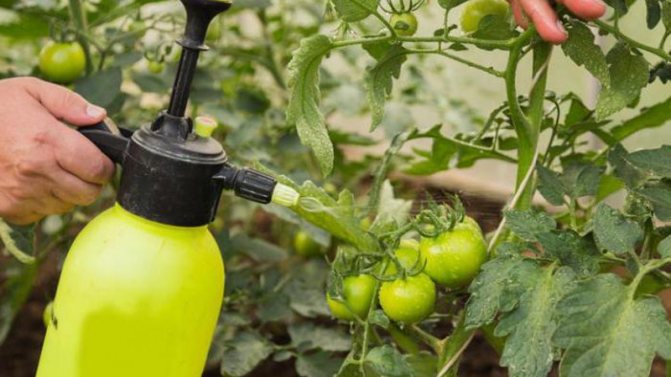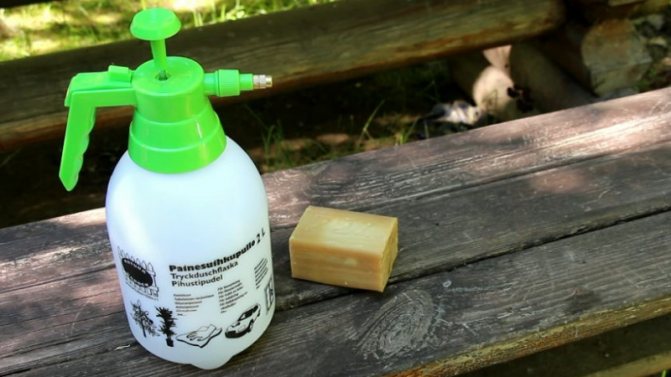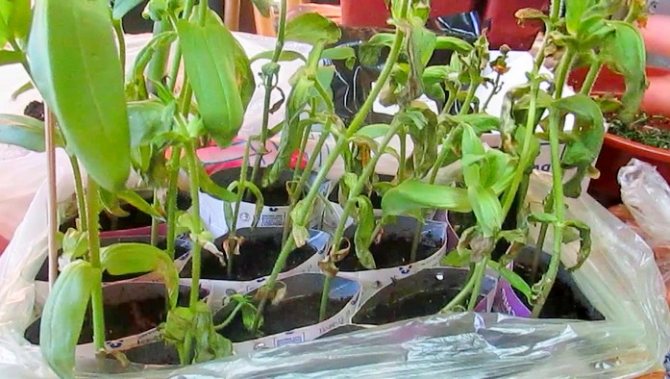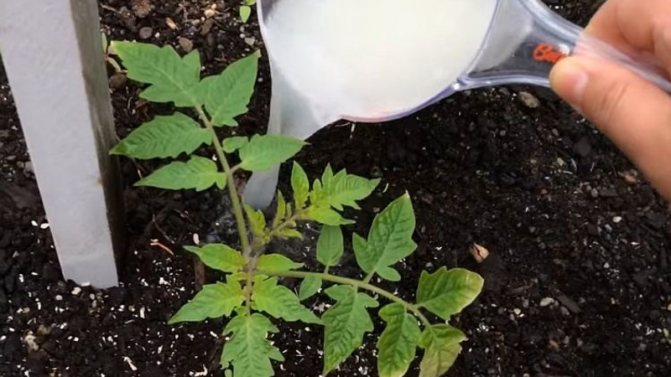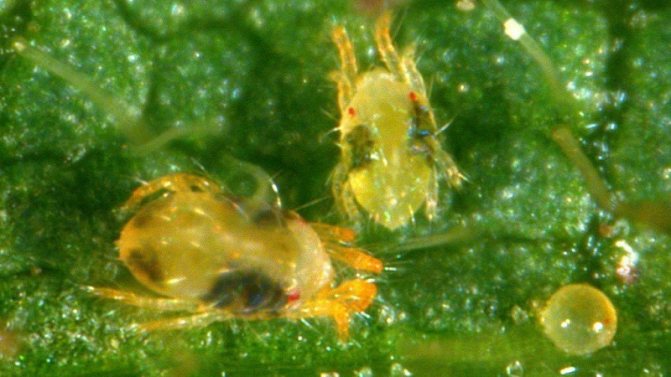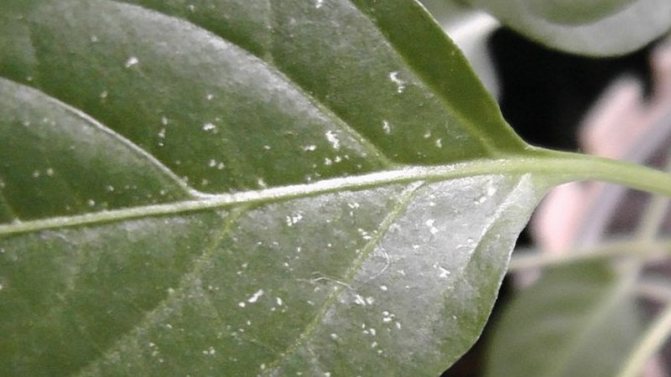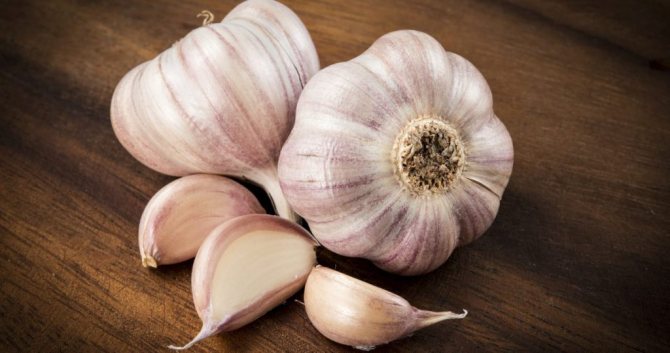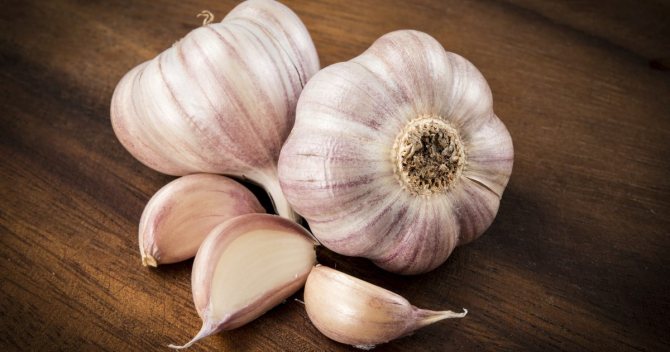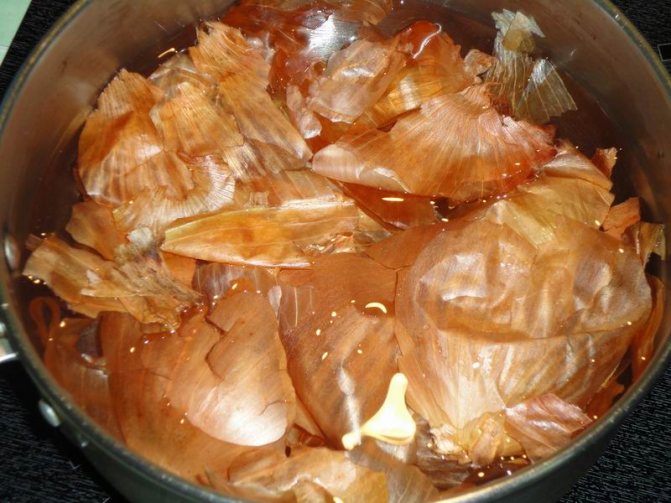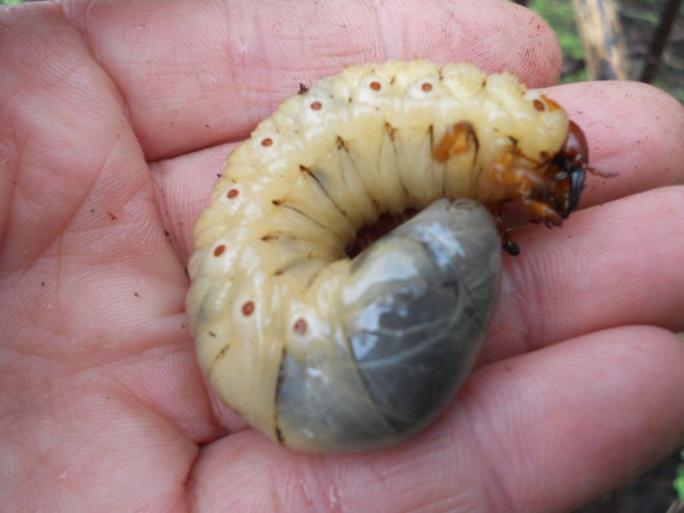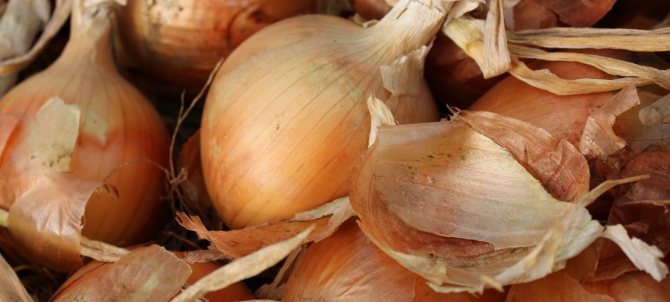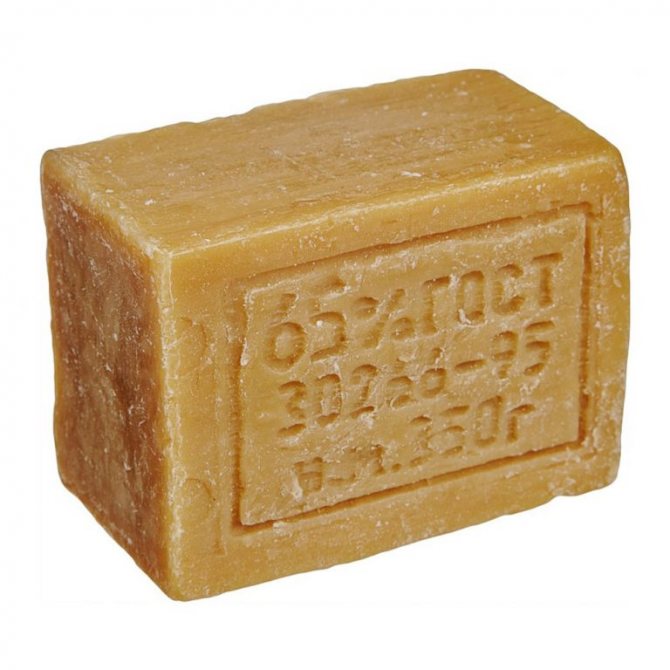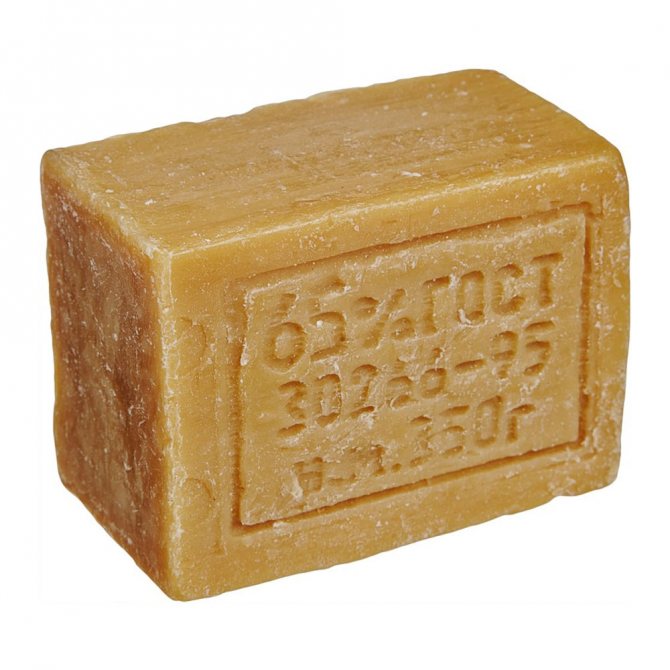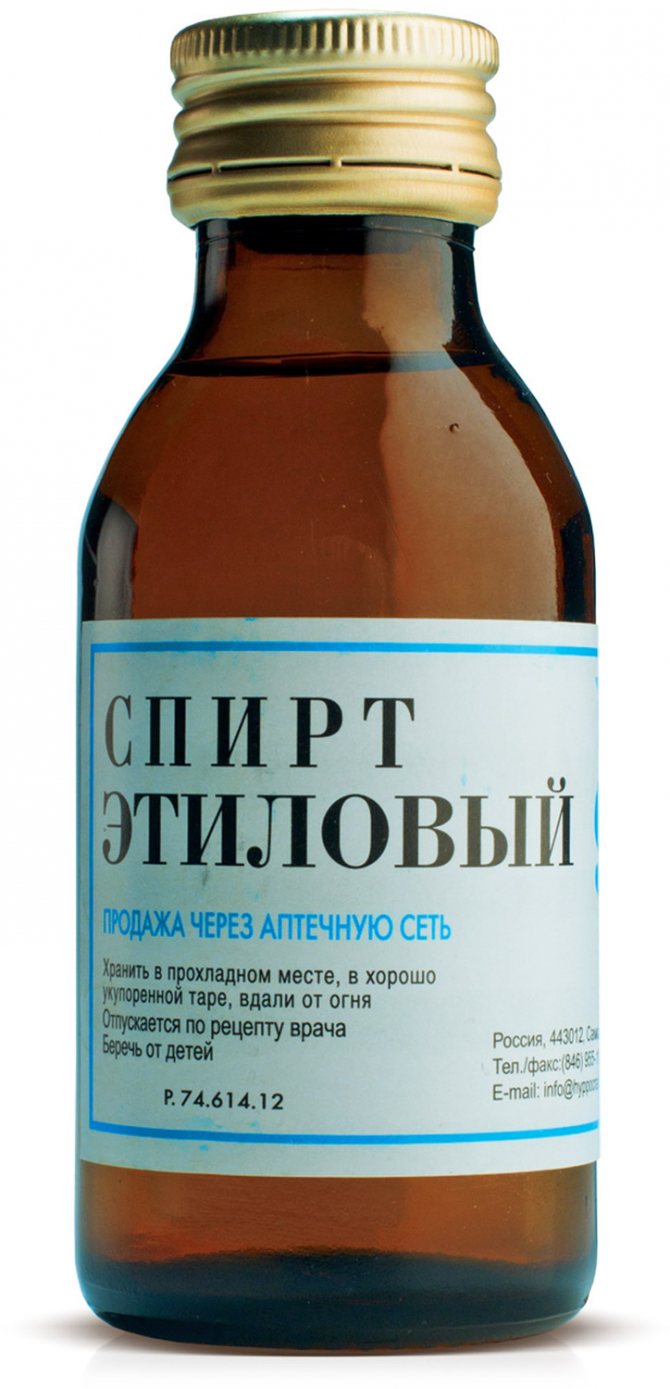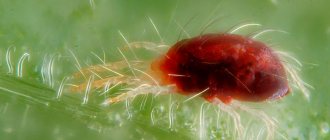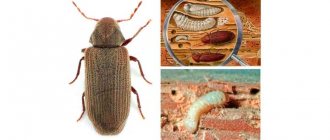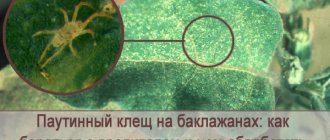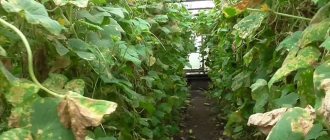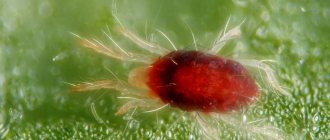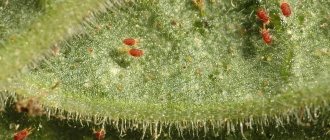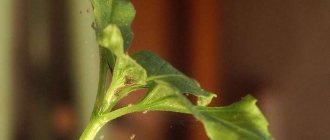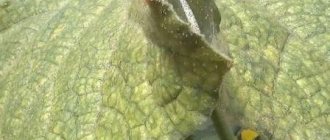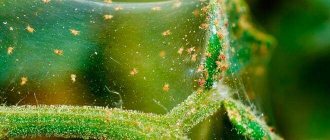A spider mite on seedlings is able to destroy a plant even before it has time to take root and bloom. Small insect loves warm weather, moderate humidity. It is especially active in the month of May, early June, when the first seedlings are planted in the garden. Peppers, eggplants, tomatoes, cucumbers may be affected. Greenhouse conditions are more suitable for spider mites, but freely parasitizes in the open field.
Characteristic differences between rusty mites
The tomato mite is a sucking pest, its body is painted in rusty-brown tones, which is why it got its second name. In some areas, this pest is colored with a predominance of yellow tones.
The number of the parasite is extremely difficult to control, since its eggs are of a transparent type, and the mites themselves are extremely small. The females are only 0.25 mm long, and the males are half as long.
How a tomato mite lives, description
The spread of the tick occurs due to the wind. So he can be abandoned several kilometers from the place where he lived earlier. In addition, the tick can be spread by water or equipment. He can get to another place if he clings to a person's clothes.
The tomato mite feels great at a temperature of +26 degrees and relative humidity not exceeding 40%. Under such conditions, the entire development cycle of the parasite, from egg to imago, takes place in one week.
If the temperature drops to +20 degrees, then the time required for the development cycle doubles. In inclement weather, the tick stops feeding and reproducing.
Females live only 40 days, but during this period they manage to lay almost 50 eggs. Insect clutches can be found near the roots of leaf hairs or in cracks in the skin of stems and leaves. The tick goes through the following stages of development:
- egg,
- larva,
- nymph,
- imago.
Adult ticks leave for the winter, they wait out the frosty period under plant debris.
Whiteflies
Whiteflies are a fairly common pest found in Europe and Asia. Several species of these butterflies harm crop plants. In total, there are about 300 species of whiteflies in the world.
Pests are omnivorous - they affect many vegetable plants, as well as decorative and flower crops.
The adults are very small. Most often, butterflies do not exceed 1.1 centimeters in length. The female's eggs are placed on the back of the leaves and sprinkled with white bloom. Fertility is from 130 to 500 eggs. On average, females live no longer than a month.
The hatched larvae very quickly stick to the leaf and lead a motionless lifestyle. Full development in larvae takes 19 to 29 days. During the season, fifteen generations of pests develop indoors.
The most effective remedy for killing whiteflies is Phosbecid. The beds are sprayed with a 10% solution in the morning and evening hours. Two treatments must be carried out during the season.
Tick harm and signs of tomato damage
The parasite poses a huge danger to greenhouse tomatoes. In conditions of protected ground, a temperature favorable for the tick is maintained all year round, and its reproduction proceeds continuously.In garden beds, this pest usually occurs in the spring and the greatest harm from it comes in dry summers.
The tomato mite can parasitize on the following crops:
- tomatoes;
- potatoes;
- pepper;
- eggplant;
- physalis;
- petunia.
The pest gives particular preference to tomatoes. Moreover, he is interested in the entire vegetative part of the plant. It can suck juice from stems, fruits, leaves and inflorescences of tomato.
Signs of tomato tick infestation:
- brown spots appear on the leaves and stems of the lower tier;
- on the bush, silvery spots appear, spreading in the direction of s, from upwards and over time acquiring a shade of rusty color;
- leaves turn brown and dry out;
- the stems turn gray, they crack;
- bushes are inhibited in growth;
- bushes affected during the flowering phase shed flowers;
- the fruits are small, their skin is wrinkled, and the color is bronze;
- with a strong lesion, the shell of the fetus becomes coarse and cracked.
The mite is able to penetrate into the tissue of a leaf or stem and, being there, continues to suck out cell sap. Leaves with an embedded mite wither quickly, curl around the main vein and die off. The stems turn brown and crack along their entire length. The loss of yield from a rusty mite can be 50% or more.
Ways to fight
Measures to combat the spider mite are difficult, especially since it is not always possible to remove it with the help of ordinary insecticides, even the most powerful ones. As noted, Tetranychus urticae is not an insect. It is useless to treat plants against it with conventional drugs. The packaging must clearly state that they have acaricidal action.
Even experienced gardeners often do not know how to get rid of spider mites on tomatoes. They complain about the ineffectiveness of even acaricidal drugs. Why? The fact is that the pest goes through several stages of development. Anything that kills adult arachnids is absolutely safe for eggs. And during the period of mass spread of the pest, each new population appears in 8 days or a little more. And the females don't agree on when to lay their eggs, so adults can hatch daily.
Preparations that destroy the pest, mainly contact action. Even with an adhesive, they only kill nymphs and adults. Then the action weakens, the acaricide itself is washed off. Indeed, to contain the tick, you need to maintain high humidity in the greenhouse or soil.
One generation of pests on tomatoes will die, from the one that appeared in 2-3 days, several individuals will remain. Those that hatched later will not suffer at all.
The main rule is how to deal effectively with spider mites on tomatoes - there should be at least three treatments. You may need to spray the plantation 4 or more times.
Chemicals
Our domestic industry produces drugs that are effective against rust mites. In addition, there are always imported products on sale, which have also proven themselves well.
If the choice fell on a chemical method of fighting a tick, one treatment, as a rule, cannot be done. You will need to do 2 or 3 sprays of the bushes to completely exterminate the parasite. In this case, it is advisable to alternate different drugs so that the pest cannot acquire resistance to one of them.
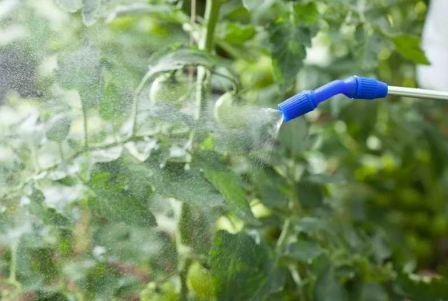
Nowadays, vegetable growers most often use the following chemicals against rusty mites:
- BI-58;
- Phosphamide;
- Rogor;
- Accent;
- Neoron;
- Actellik;
- Vertimek;
- Fufanon;
- Karate;
- Borneo;
- Tiovit Jet;
- Cumulus.
The first 4 drugs from the above list are made on the basis of the active ingredient - dimethoate. And the last 2 products are made on the basis of sulfur and are also highly effective. All of them are relevant in the fight against other mites - kidney, gall mites.
It is recommended to dilute the preparations with water, strictly according to the instructions that are attached to the product.
Bearing in mind that any drug is not capable of killing tick eggs, it is necessary to plan in advance at least 2 treatments with an interval of 7 days. It is not advisable to carry out chemical treatments during flowering. The final processing is carried out 20 days before harvest.
Reasons for the appearance
Pests are introduced to the site in different ways. In particular:
- buying seedlings with larvae from unknown producers;
- planting tomatoes in beds where crops have already been affected by a tick in the past (larvae can remain in the ground);
- planting flowers infected with a pest next to the beds.
The mite is more likely to attack plants in the greenhouse. Optimal conditions for him are temperature + 22-25, humidity up to 60% and the availability of convenient places for wintering. Arthropods hide in the ground at a depth of up to 3 meters, in last year's tops in beds or under boards in greenhouses.
The parasite reaches maturity in 10-28 days.
The use of folk remedies against rusty mites on tomatoes
At the initial stage of damage to tomato bushes and for prevention, vegetable growers use recipes based on home remedies. Below are some of the most common recipes for killing ticks.
Garlic infusion
This mite-effective recipe is easy to make as garlic is found in every home. It is prepared like this:
- take 0.5 kg of garlic cloves;
- peel them from the shell and grind them on a grater;
- pour the garlic gruel with 3 liters of boiling water;
- close the vessel with a lid and insist the composition for a week;
- then strain the solution through cheesecloth;
- before use, dilute the stock solution with water in a ratio of 1:10;
- add 30 g of liquid soap to the composition;
- use a working solution for spraying tomato bushes.
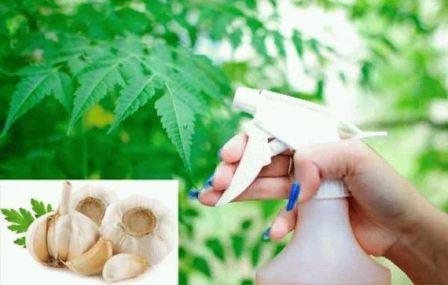

Black henbane
This poisonous plant can also be effective in removing mites. The recipe is prepared like this:
- prepare 1 kg of fresh grass and chop it;
- pour 10 liters of hot water over the grass;
- insist the composition for 1.5 days;
- strain the composition;
- add 30 g of liquid soap;
- mix and use to spray the bushes.
Infusion of onion peel
Onion peel is also always at hand and it is not difficult to prepare an infusion from it. This is done like this:
- take 110 g of onion husks and fill it with 5 liters of hot water;
- cover the container and insist the composition for a week;
- then strain the infusion and add 35 g of liquid soap;
- mix the composition and use as directed.


Infusion of calendula
The smell of this plant is very unpleasant for a rusty mite and the insect will not live where there is such a scent. The recipe for this garden flower is prepared like this:
- collect 400 g of flowers and fill them with 2 liters of hot water;
- in a closed container, insist the composition for a week;
- then strain the infusion, add 4 liters of water and 40 g of liquid soap to it;
- mix the composition and use as directed.
Apple vinegar
To prepare a recipe, it is enough to dilute 30 ml of this product in 10 liters of raw water. After adding 90 g of crushed laundry soap to the solution, you can start spraying the bushes. It is allowed to perform 3-4 such treatments per season.
Alcohol
We must take 2 tbsp. l. strong alcohol or moonshine and dilute it in 1 liter of raw water. The resulting alcohol solution is used to process tomato bushes by spraying.
Dandelion
This steppe plant is known to everyone. It can be used against rusty mites. The recipe should be prepared like this:
- Collect 400 grams of dandelion plants;
- fill them with 10 liters of water;
- insist 3-4 hours;
- add 30 g of liquid soap and start spraying.
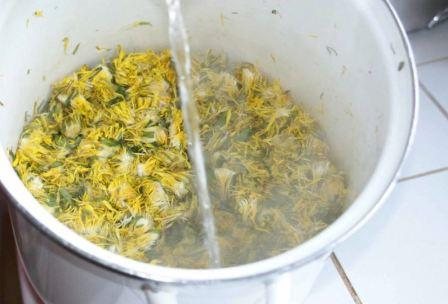

Decoction of tobacco
To apply the product, use the leaves and stems of the plant, as well as tobacco dust. Here is one of the recipes used:
- take 400 g of chopped fresh leaves and stems;
- pour a mass of 10 liters of raw water;
- insist 46 hours;
- then strain the composition;
- add the same amount of water and 5 g of liquid soap;
- stir and start sprinkling the tomatoes.
Attention! If rusty mites were parasitized in protected ground on tomatoes, then after harvesting and removing the tops from the greenhouse, fumigate with sulfur, at the rate of 200 g of sulfur per m3.
Cotton scoop
The larvae of this butterfly are omnivorous, damaging more than 120 plant varieties. On tomatoes, caterpillars gnaw leaves, then crawl onto flowers and ovary, eating up the stalk. Adult females are highly fertile. One butterfly can lay up to 500 eggs per season.
Caterpillars are large, up to 4 centimeters long, characterized by a special gluttony. Insects hibernate in the pupal stage. The emergence of adults begins in May. Oviposition occurs three to four days after the moment when the butterfly left the cocoon. Two or three generations of pests develop in one season.
Control measures include loosening the beds, killing weeds, and deep autumn plowing or digging. Effective use of entomophages. On scoops, about 50 insects (lacewings, triflexes, trichograms) parasitize. When the caterpillars appear, the plants are sprayed with Decis (2.5%) or Vapaton (50%).
Aphid
Aphids on tomatoes appear in June-July. Turning the leaf over, you can see small black or yellowish insects and clutches of eggs held by sticky molasses.
Insects drink the juices of the plant, which makes the leaves become lethargic and withered. Aphids on young tomatoes can destroy a seedling in a matter of days. If there are many pests, the tomato will dry out completely.
Aphids are destroyed with solutions of Karbofos, bleach and Trichlometaphos. Preparations are diluted according to the instructions and applied from a spray bottle to the underside of the leaves.
Insects are washed away with a stream of water, but this method is not very effective against egg-laying. Folk remedies - soap-ash solution, infusions of wormwood, garlic, celandine, hot pepper and yarrow, tobacco are effective enough to combat the pest. Aphids do not like the smell of nasturtium, thyme, garlic and onions; these plants are planted next to tomatoes to repel insects.
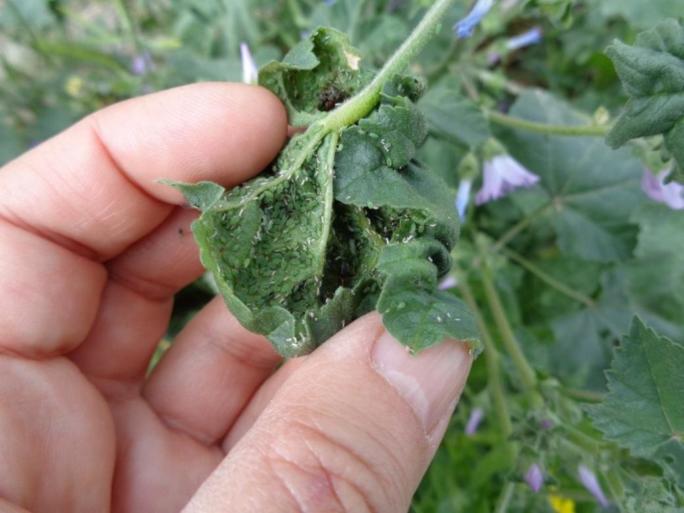

Wireworm
Wireworm (click beetle larva) is a small bright yellow and orange-yellow worm up to 1-3 cm long, living in fields and gardens. The larva has a long development cycle (from 4 to 5 years), after which it pupates and turns into a flying individual.
The wireworm eats the roots and stems of tomatoes. The body of the small larva is soft; as it grows, it becomes hard to the touch. The wireworm lives at a depth of 5-10 cm; when the soil dries up, it goes deeper. With heavy rains, worms crawl out to the very surface of the soil.
You can get rid of the wireworm with the help of environmental products and chemicals. Old pine needles, onion husks, mustard powder are placed in the holes. When decomposing, they slow down the development of the pest.
The wireworm does not like the neighborhood with siderates - white mustard, phacelia and legumes (peas, beans).
The most effective control method is to reduce soil acidity. To achieve this, slaked lime, crushed egg husks are added to the soil.
Before planting, the hole is recommended to be treated with a weak solution of potassium permanganate. Saltpeter added to the soil will enhance tomato growth and make it more resistant to wireworms. Before planting, the dug up soil is treated with Baduzin, Provotox, Diazonin (solution or granules), Aktara's solution.
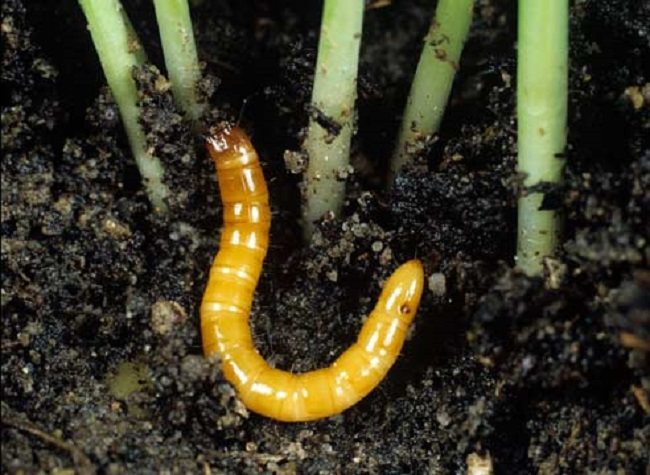

We fight spider mites on tomatoes: advice from gardeners
Anton Komaritsky, 63 years old, Tambov region:
After retirement I decided to start gardening: I have a lot of free time, I still have health - I grow vegetables both for myself and for sale. And all would be fine, but that's just the spider mite got into the habit of my tomatoes and cucumbers.I didn't even know that such an insect existed before. In the first year, the tick destroyed half of the crop. Now I approach the issue of protecting vegetables in a comprehensive manner: I carry out a lot of preventive measures, and then I process it with Fufanon two more times. I will not say that I completely managed to get rid of this parasite, but it no longer has a significant effect on the harvest.
Anna Sevidova, 48 years old, Kursk region:
We grow tomatoes in the open field for ourselves and a little for sale. The spider mite has been causing trouble for a long time. It is clear that he lives in the ground and it is not easy to destroy it. Every year, twice (in autumn and spring) we dig up and disinfect the soil, but it is impossible to completely destroy the females and insect eggs. If the winter was warm, and the summer is dry, then the pest attacks the garden in incredible quantities. In such years we use Actellik. I know that the chemical is toxic, but one treatment per season is enough.
Preventive measures
It is always easier to prevent than to cure, so inspect plant leaves regularly. Favorable conditions for the reproduction of spider mites are low humidity and hot weather, therefore, the humidity in the area should be normalized. It is advisable to periodically put seedlings under an ultraviolet lamp. Try to water the plants, but do not water them, because a false spider mite may appear, which, on the contrary, loves high humidity. It will not work to wash off the spider by immersion in water, since the insect protects itself with an air bubble.
Tomato bushes should be planted at a distance of 30 cm from each other, since in this case it is more difficult for the tick to move to a new plant. Weeds must be weeded, and cut bushes and fallen leaves must be removed, as they serve as a shelter and breeding ground for many pests. Many gardeners place sticky tape between the bushes, which traps not only ticks, but also other parasites.
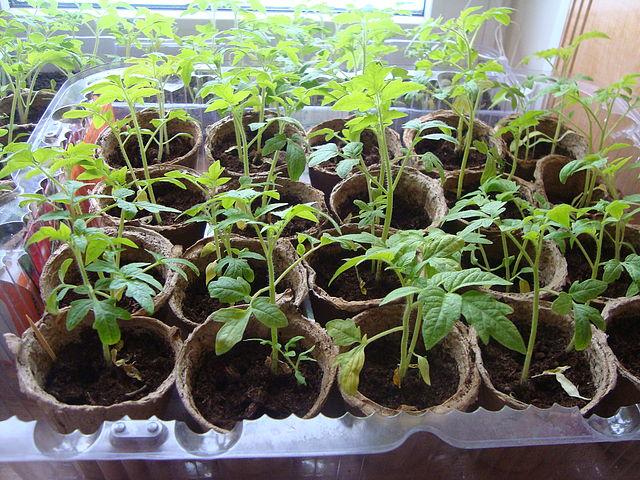

Medvedka
This large insect has an oblong body up to 5 cm long. The distribution area of the bear is all over Europe, North Africa and Asia. Adults fly, move on the ground and underground. The larvae live in the soil where they dig tunnels. Medvedka prefers loose, warm soils. Insects can be found in greenhouses and greenhouses, in fertilized beds and flower beds.
Moving underground, the bear damages the roots of the seedlings and they die. This insect can disrupt the root system of seedlings and young tomatoes, and adult tomatoes also suffer from it.
- There are about 20 ways to deal with a bear. These pests of tomatoes and other plants are destroyed by a variety of methods.
- Tomato seedlings are planted in fine-mesh nets, the sprout is protected with a rubber ring at the surface of the soil.
- Pine needles, eggshells are placed in the hole, a few drops of iodine are dripped.
- Pieces of fish, cloves of garlic, onion husks are buried in the beds, marigolds are planted.
- Freshly cut aspen stakes are stuck into the ground.
- Medvedka is destroyed with drugs Grizzly, Medvetox, Thunder. The granules are poured into the grooves between the beds. The insect eats the pellets and dies.
Gardeners build beer traps, fill the minks with oil and water. In the fall, traps are made in the pits from old foliage and manure. After freezing, manure and compost are scattered around the garden and the bears freeze.
Mistakes of novice gardeners
Inexperienced gardeners make mistakes that will later become critical for the entire crop. Here are some examples of the worst offenses:
- Reuse of prepared chemical solutions.
- Desire to cure a plant at a critical stage. After you notice the cobwebs, the bush must be removed immediately, and the soil under it must be disinfected.
- The use of cheap chemicals from past generations that harm humans, the soil and the plants themselves.
- Excessive moisture when signs of tomato damage are detected.
Before using chemical agents, carefully read the composition and conditions of use, so as not to harvest a poisonous crop later.
The spider mite is a very unpleasant parasite that is difficult to remove and difficult to find. If you are growing tomatoes, be sure to check the backs of the plant leaves. Maintain acceptable humidity conditions, which will be lethal to the insect. Try to carry out heat treatment of the soil for seedlings, this will exclude the appearance of uninvited guests. Remember, it is easier to keep out any parasite than to remove it!
Tobacco mosaic virus
Tobacco Mosaic Virus (TMV) is easily transmitted through instruments, sometimes seeds
Tomato Spotted Wilt Virus (TSWV) is transmitted by thrips, especially the western flower thrips.
Pepino mosaic virus (PepMV) affects mainly greenhouse tomatoes, is a quarantine virus, can be transmitted through seeds.
Unlike the fight against fungal diseases with chemicals (fungicides used), there are currently no effective chemicals that protect plant parts from viral infection. In addition, there are no known field chemicals that can cure viral infections in plants. Practically speaking, plants infected with viruses will remain sick.
Thus, the fight against the tobacco mosaic virus is primarily aimed at reducing and eliminating the sources of the virus and limiting the spread of the disease by insects.
The tobacco mosaic virus is the most resistant plant virus that is known. Studies have been carried out that have noted the viability of viruses for 50 years in the dried part of plants.
Therefore, hygiene is the only one most effective in the practice of combating the tobacco mosaic virus. Tools, gloves, all items of contact with infected plants must be disinfected with hot soapy water. Synthetic detergents do not give the desired effect. Gardeners should also wash their hands immediately after handling infested tomatoes.
The leaves and other parts of the plant must be burned, and the ground in greenhouses must be steamed.
In the open field, after the destruction of the diseased plant, the soil is covered with a film and steamed in sunlight for several months.
Tomato varieties should be selected that may be more immune to these diseases. The popular varieties are Dina, Wild Rose, Nastena F1 (besides mosaic resistant to late blight, Alternaria), Andreevsky surprise, Golden Andromeda F1 and others.
Seedlings of which plants are most often affected
The spider mite is a problem not only for garden crops, but also for indoor flowers. Suffering from infection:
- Zucchini, melons and watermelons. Loss of leaves from sunburn leads to a decrease in yield.
- Sugar peas and beans. The pods are attacked.
- Garden roses.
- Indoor flowers (fuchsia, pelargonium, orchid). Spider mites pose aesthetic problems. Large populations kill plants.
- Seedlings of cucumbers, tomatoes and eggplants.
- Fruit trees (grapes, peaches, nectarine).
- Young cabbage bushes.
- Strawberries and strawberries.

